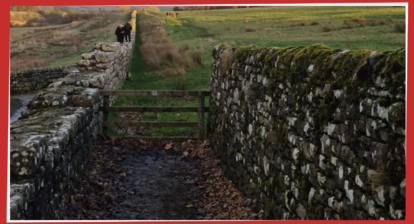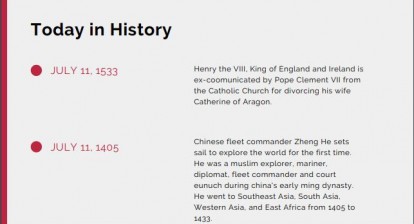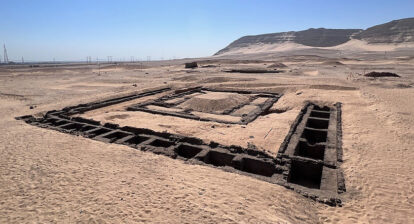A huge Maya city has been discovered centuries after it disappeared under jungle canopy in Mexico.
Archaeologists found pyramids, sports fields, causeways connecting districts and amphitheatres in the southeastern state of Campeche.
They uncovered the hidden complex – which they have called Valeriana – using Lidar, a type of laser survey that maps structures buried under vegetation.
They believe it is second in density only to Calakmul, thought to be the largest Maya site in ancient Latin America.
The team discovered three sites in total, in a survey area the size of Scotland’s capital Edinburgh, “by accident” when one archaeologist browsed data on the internet.
“I was on something like page 16 of Google search and found a laser survey done by a Mexican organisation for environmental monitoring,” explains Luke Auld-Thomas, a PhD student at Tulane university in the US.
It was a Lidar survey, a remote sensing technique which fires thousands of laser pulses from a plane and maps objects below using the time the signal takes to return.
But when Mr Auld-Thomas processed the data with methods used by archaeologists, he saw what others had missed – a huge ancient city which may have been home to 30-50,000 people at its peak from 750 to 850 AD.

Map showing the ruins that were found in eastern Mexico, in Campeche. Credit: Auld-Thomas et al / Antiquity
That is more than the number of people who live in the region today, the researchers say.
Mr Auld-Thomas and his colleagues named the city Valeriana after a nearby lagoon.
The find helps change an idea in Western thinking that the Tropics was where “civilisations went to die”, says Professor Marcello Canuto, a co-author in the research.
Instead, this part of the world was home to rich and complex cultures, he explains.
We can’t be sure what led to the demise and eventual abandonment of the city, but the archaeologists say climate change was a major factor.
Valeriana has the “hallmarks of a capital city” and was second only in density of buildings to the spectacular Calakmul site, around 100km away (62 miles).
It is “hidden in plain sight”, the archaeologists say, as it is just 15 minutes hike from a major road near Xpujil where mostly Maya people now live.
There are no known pictures of the lost city because “no-one has ever been there”, the researchers say, although local people may have suspected there were ruins under the mounds of earth.
The city, which was about 16.6 sq km, had two major centres with large buildings around 2km (1.2 miles) apart, linked by dense houses and causeways.
It has two plazas with temple pyramids, where Maya people would have worshipped, hidden treasures like jade masks and buried their dead.
It also had a court where people would have played an ancient ball game.
There was also evidence of a reservoir, indicating that people used the landscape to support a large population.
In total, Mr Auld-Thomas and Prof Canuto surveyed three different sites in the jungle. They found 6,764 buildings of various sizes.
Professor Elizabeth Graham from University College London, who was not involved in the research, says it supports claims that Maya lived in complex cities or towns, not in isolated villages.
“The point is that the landscape is definitely settled – that is, settled in the past – and not, as it appears to the naked eye, uninhabited or ‘wild’,” she says.
The research suggests that when Maya civilisations collapsed from 800AD onwards, it was partly because they were so densely populated and could not survive climate problems.
“It’s suggesting that the landscape was just completely full of people at the onset of drought conditions and it didn’t have a lot of flexibility left. And so maybe the entire system basically unravelled as people moved farther away,” says Mr Auld-Thomas.
Warfare and the conquest of the region by Spanish invaders in the 16th century also contributed to eradication of Maya city states.
Many more cities could be found
Lidar technology has revolutionised how archaeologists survey areas covered in vegetation, like the Tropics, opening up a world of lost civilisations, explains Prof Canuto.
In the early years of his career, surveys were done by foot and hand, using simple instruments to check the ground inch by inch.
But in the decade since Lidar was used in the Mesoamerican region, he says it’s mapped around 10 times the area that archaeologists managed in about a century of work.
Mr Auld-Thomas says his work suggests there are many sites out there that archaeologists have no idea about.
In fact so many sites have been found that researchers cannot hope to excavate them all.
“I’ve got to go to Valeriana at some point. It’s so close to the road, how could you not? But I can’t say we will do a project there,” says Mr Auld-Thomas.
“One of the downsides of discovering lots of new Maya cities in the era of Lidar is that there are more of them than we can ever hope to study,” he adds.
The research is published in the academic journal Antiquity. This article was first published by the BBC, read it here.







